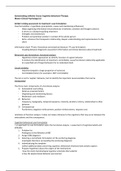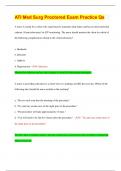Samenvatting
Samenvatting verplichte artikelen Cognitive Behavioural Therapy Clinical Psychology Master UU
- Instelling
- Universiteit Utrecht (UU)
Samenvatting van de artikelen: PageStritzke_2014_H5_Linking Assessment to treatment_Case formulation pp 61-77, Academic Integrity and Confidentiality, Page Stritzke Chapter 10 Confidentiality, Craske 2014 Exposure and inhibitory learning approach, Bennett-Levy Ch 2 Behavioural experiments, Waller_2...
[Meer zien]














